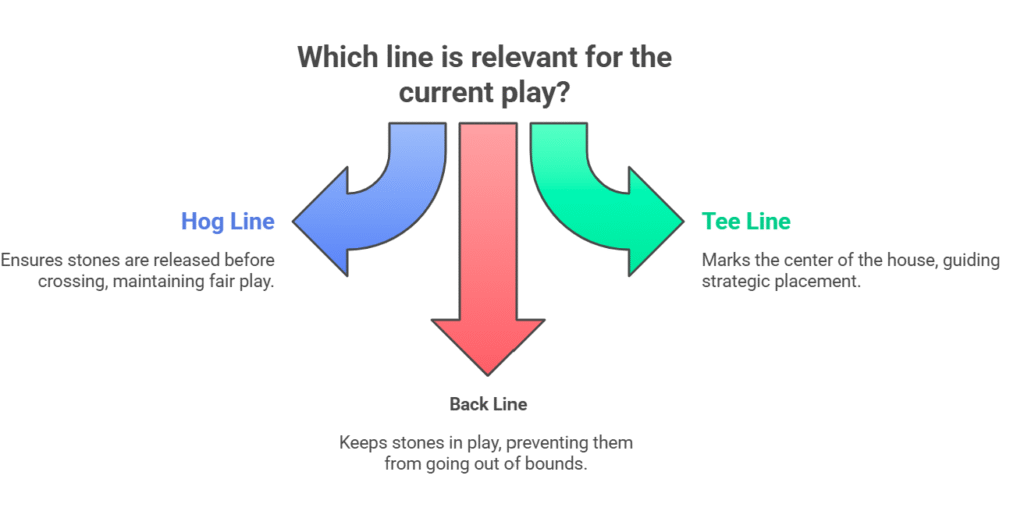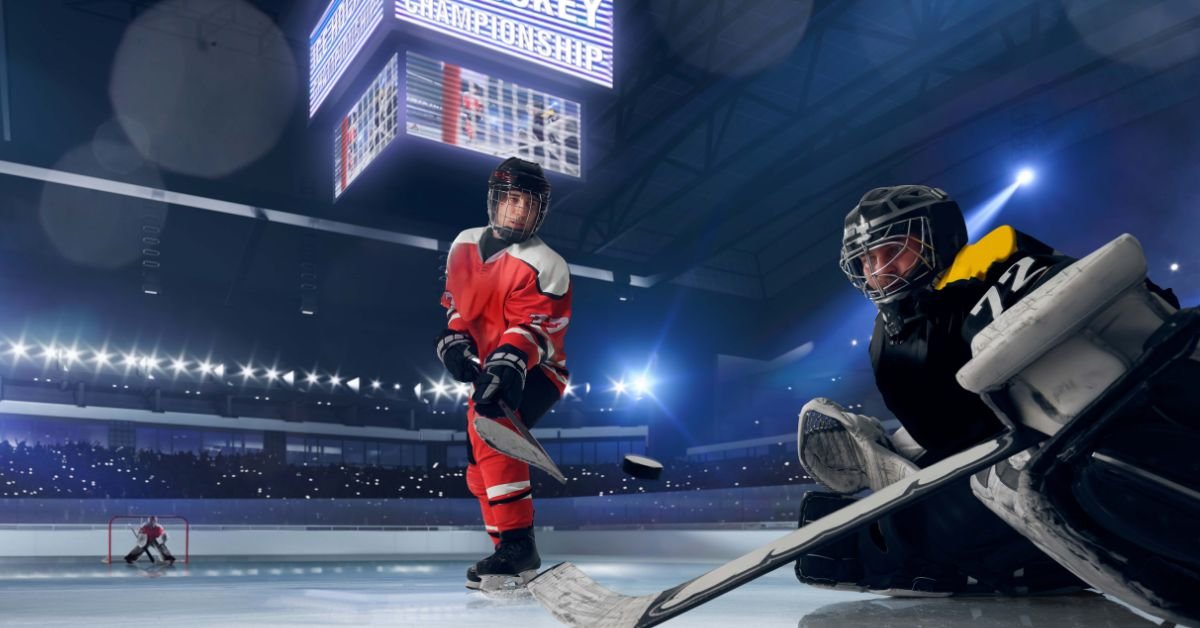Curling is a team sport played on ice, where players slide heavy, polished stones toward a circular target area called the “house.” The goal is to get your stones closer to the center of the house than your opponent’s. It’s a game of strategy, precision, and teamwork—often described as “chess on ice.”
But curling is more than just sliding stones. It’s about reading the ice, communicating with teammates, and making split-second decisions. The sport is played by two teams of four, and each player has a specific role, from delivering the stone to sweeping the ice in front of it.
The Invention of Curling: A Sport Born on Frozen Ponds
Where Did Curling Begin?
The invention of curling dates back to 16th-century Scotland. Farmers and villagers would gather on frozen ponds, using smooth stones from riverbeds as makeshift curling stones. The earliest known curling stones, some inscribed with dates and initials, have been found in Scottish museums.
Curling quickly became a social event, with communities coming together to play and compete. The sport’s popularity spread to Canada, where it found a new home and evolved into the modern game we know today.
Curling’s Global Journey
Today, curling is played in over 60 countries, with major competitions like the World Curling Championships and the Winter Olympics drawing millions of viewers. The sport’s blend of tradition and innovation keeps it fresh and exciting for new generations.
Meet the Curler: The Heart of the Game
What Makes a Great Curler?
A curler is more than just someone who slides stones down the ice. It takes skill, strategy, and nerves of steel. Each team has four players: the lead, the second, the vice-skip (or third), and the skip. The skip is the team captain and strategist, calling the shots and reading the ice.
Great curlers are known for their precision, communication, and ability to stay calm under pressure. As one curler put it, “It’s not just about throwing the perfect stone—it’s about working together and trusting your teammates.”
The Role of Sweeping
Sweeping is one of the most distinctive aspects of curling. When a stone is delivered, two players sweep the ice in front of it to control its speed and direction. The friction from sweeping slightly melts the ice, allowing the stone to travel farther and straighter. It’s a skill that requires strength, timing, and teamwork.
Curling Rink Object: The Ice, the House, and More
The Curling Rink
A curling rink object refers to the various elements that make up the playing surface. The rink is a long, narrow sheet of ice, typically 150 feet long and 16.5 feet wide. At each end is the “house,” a set of concentric circles that serve as the target.
The House
The house is where the scoring happens. It consists of a 12-foot diameter circle with smaller rings inside. The closer your stone is to the center, or “button,” the more points you score.
The Hack
Players start each shot from the “hack,” a foothold at the end of the rink. The hack gives curlers the leverage they need to slide and deliver the stone with precision.
Other Key Objects
- Hog Line: Stones must be released before crossing this line.
- Tee Line: Runs through the center of the house.
- Back Line: Stones must stay within this boundary to remain in play.

The Curling Stone: Science Meets Tradition
What Is a Curling Stone?
The curling stone is the star of the show. Each stone weighs about 44 pounds and is made from a special type of granite, mostly sourced from Ailsa Craig, an island off the coast of Scotland. The stone’s unique shape and polished surface allow it to glide smoothly across the ice.
Why Does the Stone Curl?
One of the most fascinating aspects of curling is the way the stone “curls” or curves as it travels down the ice. This happens because of the way the stone is rotated upon release and the texture of the ice. Skilled curlers can control the amount of curl, using it to navigate around other stones and set up strategic plays.
The Handle
Each stone has a handle, which players use to impart a gentle spin. The color of the handle distinguishes one team’s stones from the other.
The Rules of Curling: How the Game Is Played
Teams and Turns
Curling is played between two teams of four. Each player delivers two stones per “end” (similar to an inning in baseball), for a total of eight stones per team per end. The game usually consists of eight or ten ends.
Scoring
After all stones have been delivered, only one team can score in each end. Points are awarded for each stone that is closer to the center of the house than the opponent’s nearest stone.
Strategy and Tactics
Curling is often called “chess on ice” because of the strategic depth. Teams must decide when to play offensively, when to defend, and how to use the curl of the stone to their advantage.
The Curling Experience: Why People Love the Sport
A Social Game
Curling is known for its friendly, inclusive atmosphere. Many clubs welcome beginners, and it’s common for players to share a drink and a laugh after the game. The “spirit of curling” emphasizes sportsmanship and respect.
A Real-Life Example
One new curler shared, “I joined a local curling club just to try something new. I never expected to fall in love with the game—or make so many friends along the way.”
Curling for All Ages
Curling is accessible to people of all ages and abilities. Adaptive curling programs make it possible for those with physical challenges to enjoy the sport.
The Invention of Curling: A Deeper Dive
Early Equipment
The first curling stones were simple river rocks, sometimes with a wooden handle attached. As the sport evolved, so did the equipment. Today’s curling stones are precision-engineered for consistency and performance.
The Evolution of the Rink
Early games were played outdoors on frozen ponds. Modern curling rinks use carefully maintained ice, with temperature and humidity controlled for optimal play.
Curling’s Place in History
Curling has been part of the Winter Olympics since 1998 (with a brief appearance in 1924). Its rich history and unique culture make it a beloved sport around the world.
Curling Stone: The Iconic Object of the Game
How Curling Stones Are Made
Each curling stone is crafted from granite, chosen for its durability and low water absorption. The stones are shaped, polished, and fitted with a handle. The process is so precise that stones can last for decades.
Caring for the Stones
Curling clubs take great care of their stones, regularly cleaning and inspecting them for damage. A well-maintained stone ensures fair play and consistent results.
The Science of Curl
Researchers have studied the physics of curling for years. The combination of spin, ice texture, and sweeping creates the signature curl that makes the game so strategic.
Curling Rink Object: Tools of the Trade
The Broom
The curling broom is used for sweeping the ice in front of the stone. Modern brooms are lightweight and designed for maximum efficiency. Sweeping can make a stone travel up to 15 feet farther!
The Shoes
Curlers wear special shoes—one with a slippery sole for sliding, and one with a grippy sole for traction. This allows for smooth, controlled movement on the ice.
Measuring Devices
When stones are close together, officials use measuring devices to determine which is closer to the center. Precision is key in curling!
Curling in 2025: New Trends and Innovations
Technology on the Ice
In 2025, curling is embracing technology. Sensors in stones and brooms provide real-time data on speed, rotation, and ice conditions. This helps teams refine their strategy and improve performance.
Eco-Friendly Rinks
Sustainability is a growing focus. Many curling rinks are adopting energy-efficient ice-making systems and using eco-friendly materials for rink objects.
Global Growth
Curling is expanding in Asia, South America, and beyond. New clubs and leagues are making the sport more accessible than ever.
The Pros and Cons of Curling
Pros
- Inclusive: Suitable for all ages and abilities.
- Strategic: Combines physical skill with mental strategy.
- Social: Builds community and friendships.
- Low Impact: Gentle on the body compared to many sports.
Cons
- Learning Curve: Mastering the technique takes time.
- Ice Access: Not all regions have curling rinks.
- Equipment Cost: Quality stones and brooms can be expensive.
Curling Safety and Usability in 2025
Staying Safe on the Ice
Curling is generally safe, but slips and falls can happen. Clubs provide safety briefings and encourage the use of helmets for beginners.
Accessibility
Adaptive equipment and inclusive programs ensure that everyone can enjoy curling, regardless of physical ability.
FAQs
Q. What is curling and how is it played?
A. Curling is a team sport where players slide stones on ice toward a target area. Teams score points by getting their stones closer to the center than their opponents. The game involves strategy, teamwork, and precise control of the curling stone.
Q. Who invented curling and where did it originate?
A. Invention of curling is credited to 16th-century Scotland, where people played on frozen ponds with river stones. The sport has evolved over centuries and is now played worldwide.
Q. What is a curling stone made of?
A. curling stone is made from granite, usually sourced from Ailsa Craig in Scotland. Each stone weighs about 44 pounds and is designed to glide smoothly on the ice.
Q. What are the main objects on a curling rink?
A. Curling rink objects include the house (target area), hack (starting block), hog line, tee line, and the curling stones. Players also use brooms and special shoes for sweeping and sliding.
Conclusion
what is curling? It’s a sport that blends history, science, and community in a way few others can. From the invention of curling in Scotland to the high-tech rinks of 2025, the game continues to evolve and inspire. Whether you’re watching the Olympics or trying your hand at a local club, curling offers something for everyone.
CLICK HERE FOR MORE BLOG POSTS
“In a world of instant takes and AI-generated noise, John Authers writes like a human. His words carry weight—not just from knowledge, but from care. Readers don’t come to him for headlines; they come for meaning. He doesn’t just explain what happened—he helps you understand why it matters. That’s what sets him apart.”

